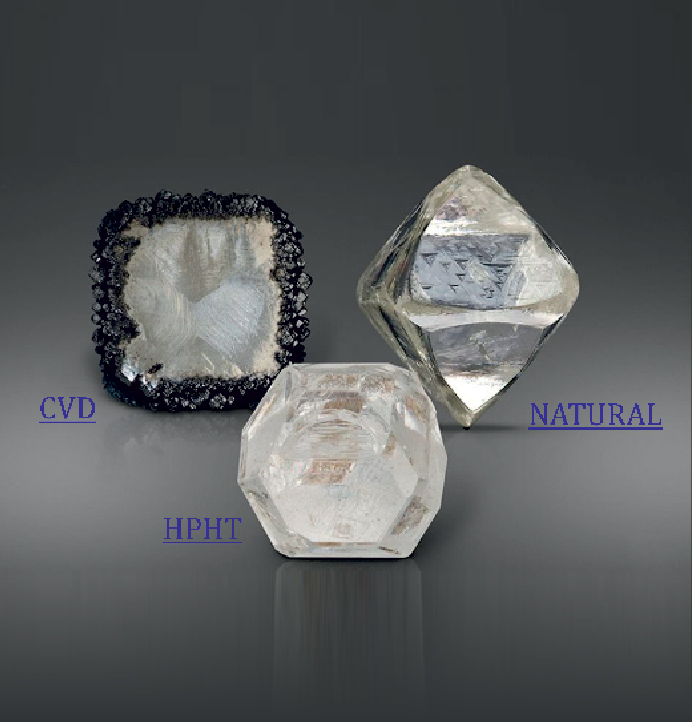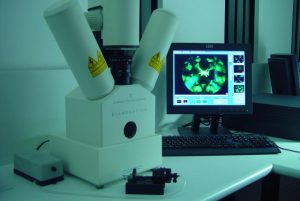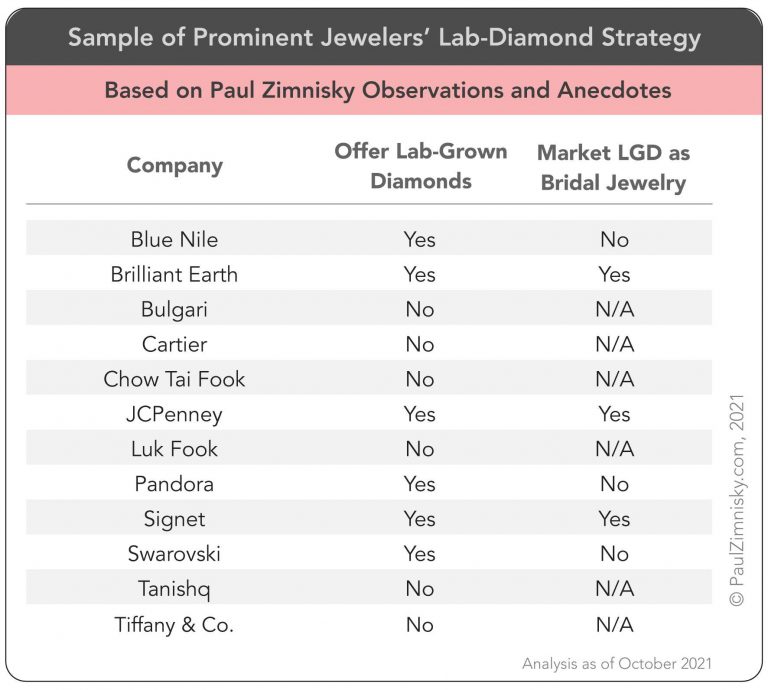Over the last year, I’ve noticed more and more customers bringing their own lab grown diamonds into us for us to set into a ring. Sensing a trend, we’ve recently jumped on the lab grown diamond bandwagon and started selling them ourselves. That said, there still is a lot of myths, confusion and debate amongst industry professionals and consumers alike.
What Are Lab Grown Diamonds?
Lab grown diamonds are quite literally what their name suggests – diamonds grown in a lab, as opposed to natural diamonds that are mined from the earth. A lab grown diamond has the same chemical composition and crystal structure as a natural, earth-mined diamond. Therefore, unlike “diamond simulants” or fractured filled diamonds, they technically should be considered “The Real McCoy” in terms of diamonds.
There are two methods of growing diamonds in a lab – chemical vapour deposition (CVD) and the high pressure, high temperature method. Both methods are excellently described in James E. Shigley’s article in Gems and Gemology.
Once a diamond is grown in the lab, it is then cut and polished, much like a natural diamond, although as shown below, lab grown diamonds don’t have the usual octahedron shape of a natural diamond.

Difference between lab grown and natural rough diamonds.
Detecting Lab Grown Diamonds
In the late 1990s, DeBeers released two tools to detect lab grown diamonds, the DiamondSure and the DiamondView.

Above: Diamond View used by my friend, Roy Cohen of DCLA.
Whilst these two pieces of equipment were prohibitively expensive for all but the largest laboratories, as to be expected, technology has gotten better and the prices have come down significantly. Nowadays, many different “portable” tools exist such as the GIA ID100, costing US$5-6000, which is well within reach of most jewellers, valuers and appraisers.
That said, almost all diamonds, at least those worth anything, are laser inscribed nowadays, and the words “LAB GROWN” or word to that effect usually feature prominently in the laser inscription.
Why Buy A Lab Grown Diamond
The only reason to buy a lab grown diamond is to save money. With lab grown diamonds approximately 1/6 the price of natural diamonds, it means consumers can buy more diamond for their money.
There are other reasons to buy a lab grown diamond that get floated around. One such is that lab grown diamonds are more environmentally friendly than mined diamonds. However, as Rob Bates of JCK explains, this is very much a contentious issue, and he notes “It’s striking that no conservation group has endorsed lab-grown diamonds—though plenty have endorsed electric cars.”
The second such reason touted in favour of lab grown diamonds is that lab grown diamonds avoid any human rights or other ethical issues. However, as Rob Bates explained in above linked article, the diamond industry contributes $8 billion annually to Africa, and that:
“sustainability is linked to economic development, it’s about structural change, it’s about women’s rights, and it’s about inclusive participation. Synthetic diamonds don’t do any of that. They will take that away. It’s closing the door on the micro-producers to enter the international market.”
Therefore, unlike say a devout Christian refusing to work on a Sunday, or a vegan buying a polyester scarf instead of a silk one, the ethical and environmental benefits of lab grown diamonds over mined diamonds are somewhat vague, and possibly even misleading.
History and Current State of Lab Grown Diamonds
Whilst diamonds have be grown in the lab on a small scale for years, the first major commercial player on the market was a company called Gemesis. Founded in 1996, it took them until 2013 to grow a diamond resulting in a 1.29ct polished emerald cut diamond. Since then, production across the entire industry has reached 6 to 7 million carats per annum. This is dwarfed though by the amount of mined diamonds, which is well over 100 million carats per year.
With increased production and lower cost, the price of lab grown diamonds has gone down significantly. I remember in the early 2010s Gemesis, and other companies like Apollo Diamond were producing their gems at a price higher than mined diamonds and thinking that there wasn’t really any point to growing diamonds in a lab. Now, less than 10 years later, the price has come down significantly. Bain and Company reports that in 2017 the price of a lab grown diamond was 65% of an equivalent mined diamond and in 2020, it fell to 35% of an equivalent mined diamond. It is now the end of 2021 and due to big increases in the prices of mined diamonds, that figure looks more like 15-20% of an equivalent mined diamond.
My Prediction for Lab Grown Diamonds
In my opinion, the biggest obstacle for lab grown diamonds is acceptance by the diamond and jewellery industry. Whilst there are plenty of jewellers and jewellery stores that sell lab grown diamonds, the sense of elitism still lingers on. Paul Ziminsky shows that the likes of Tiffany & Co, Bulgari and Cartier don’t sell lab grown diamonds, whilst jewellery shops such as Signet (Zales, James Allen etc), Pandora and Blue Nile do.

Table of Retailers Lab Grown Diamond Strategy. Source.
However, it seems the tide is turning, as Rob Bates reports one of Asia’s jewellery giants, Chow Tai Fook is now selling lab grown diamonds under a separate brand.
I think it is therefore inevitable that lab grown diamonds will become ubiquitous within the diamond and jewellery industry, and most stores and online vendors will sell them in one way or another. Some stores may offer them in non-engagement jewellery, whilst others may sell their entire line from lab grown diamonds.
Secondly, it is quite clear that the price of lab grown diamonds is falling. For an item that is produced with relatively new technology, that is by no means surprising.
However, the question remains how low can the price go? Well if the main input cost is electricity and equipment to grow the diamonds, and with polishing costs at around $10/carat, then lab grown diamonds have quite a long way to go before they bottom out.
Quite clearly, an increasing amount of consumers are buying lab grown diamonds. My own experience even says many are using them for engagement rings. However, at some stage will consumers realise that the stone they are using for an engagement ring may well be virtually worthless in 10 years time? More importantly, will they care? If consumers are educated and thus care about the intrinsic value of the diamond jewellery they are buying, then lab grown diamonds may well be the “one hit wonder” of the jewellery industry.